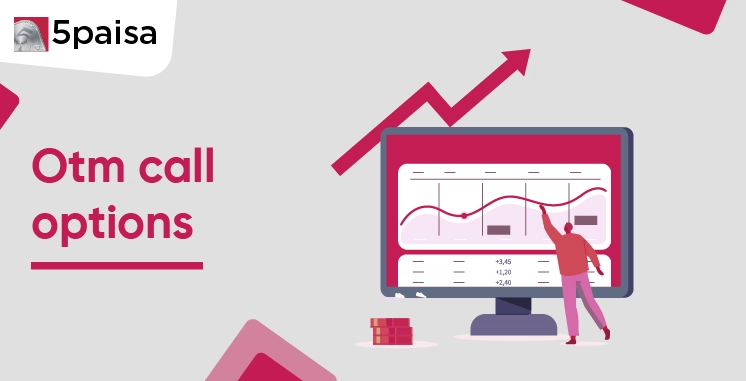Content
- What Are OTM Call Options?
- Essential Considerations Before Using OTM Call Options
- Characteristics of OTM Options
- Advantages & Disadvantages of Trading Out of the Money Call Option
- Why Use OTM Options?
- Example of OTM Options
- What Happens to Out-of-the-Money Call Option at Expiration?
- Final Thoughts
In today’s fast-moving and unpredictable markets, the world of options trading isn’t just for hedge funds or expert traders anymore.
Whether you're a retail investor beginning your journey into derivatives trading or a finance leader looking to hedge smartly, understanding OTM call options in the stock market could help enhance your overall trading strategy.
But let’s be honest, most explanations out there are either too technical or too vague to be useful. That’s why we’re cutting through the noise and explaining what is out of the money call option in easy to understand language.
In this blog, we’re breaking down what an out-of-the-money call option really is, why it matters in both speculative strategies and risk-management approaches, and how traders can use it to their advantage, even with minimal capital. It’s about strategy, timing, and positioning yourself for potential upside in uncertain conditions.
Ready to unlock this powerful (yet often misunderstood) financial tool? Let us share insights on how OTM calls can help you trade smarter and hedge wiser.
More Articles to Explore
- Difference between NSDL and CDSL
- Lowest brokerage charges in India for online trading
- How to find your demat account number using PAN card
- What are bonus shares and how do they work?
- How to transfer shares from one demat account to another?
- What is BO ID?
- Open demat account without a PAN card - a complete guide
- What are DP charges?
- What is DP ID in a demat account
- How to transfer money from demat account to bank account
Disclaimer: Investment in securities market are subject to market risks, read all the related documents carefully before investing. For detailed disclaimer please Click here.
Frequently Asked Questions
Selling an OTM call option allows you to collect a premium upfront. If the option remains out of the money until expiration, that premium becomes your profit. However, if the stock price climbs above the strike price, you could be obligated to settle the difference in cash at expiry if the option finishes in-the-money.
Deep ITM options have a strike far below (calls) or above (puts) the market price, with high intrinsic value and cost. OTM options have no intrinsic value and are cheaper, but carry a higher risk of expiring worthless.
They can be more profitable in percentage terms if the underlying asset makes a large move. However, their probability of profit is lower, and many expire worthless. They are high-risk, high-reward financial instruments.
- In neutral to mildly bullish markets (covered call strategies)
- When implied volatility is high, inflating premiums
- Near resistance levels where you expect limited upside
Selling out-of-the-money (OTM) calls is most effective when there's a low probability that the underlying asset will climb high enough to exceed the strike price before expiration.




